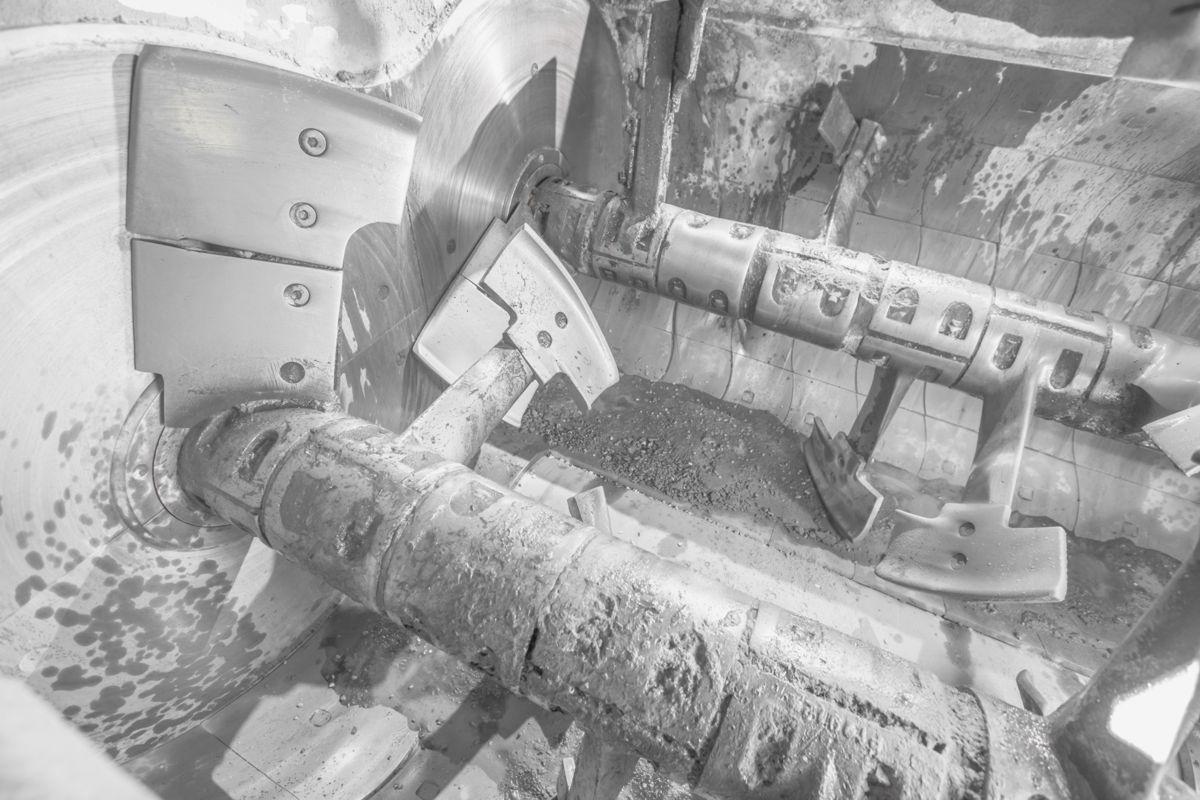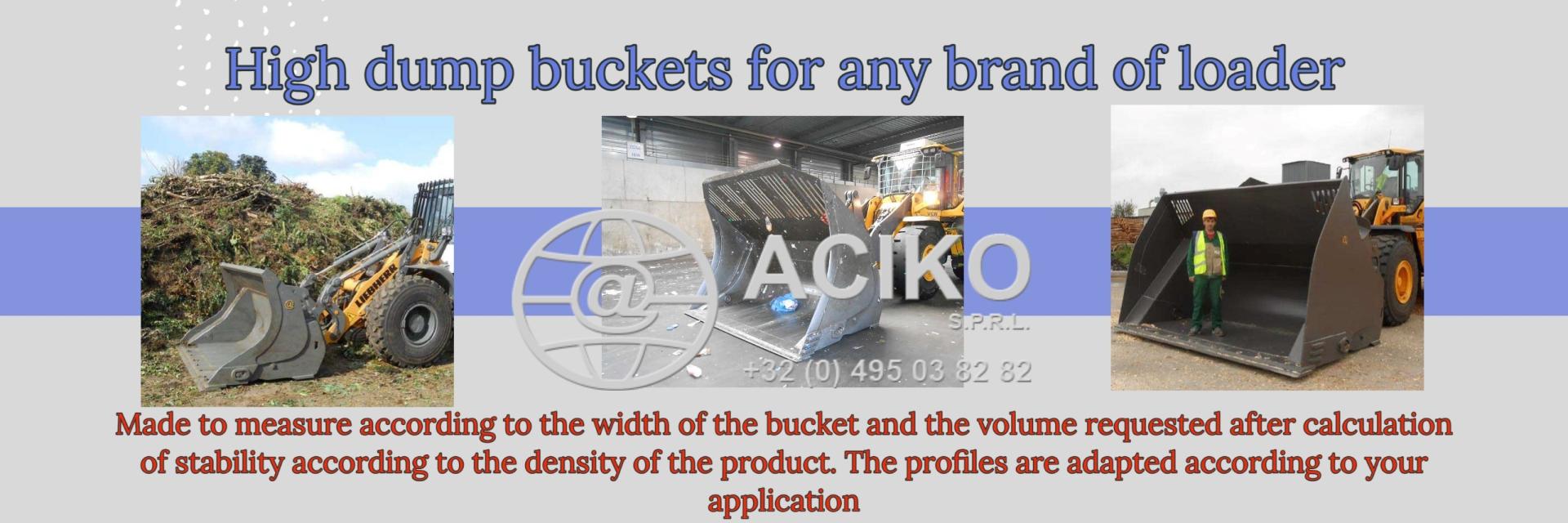Low Carbon Concrete and Climate Change
13/10/22-FR-English-NL-footer
Béton bas carbone et changement climatique
 Rien de moins que l'avenir de l'industrie du béton – et le climat mondial – est en jeu dans un projet de recherche qui tente de trouver des moyens de rendre viable le béton à faible émission de carbone.
Rien de moins que l'avenir de l'industrie du béton – et le climat mondial – est en jeu dans un projet de recherche qui tente de trouver des moyens de rendre viable le béton à faible émission de carbone.
Saviez-vous que 10 MILLIARDS de mètres cubes de béton sont fabriqués chaque année. C'est beaucoup de zéros et beaucoup de béton, mais plus important encore, cela signifie également énormément de dioxyde de carbone qui réchauffe le climat émis dans l'atmosphère à l'aide de ciment standard - 8 % des émissions mondiales totales de CO2.
Alors pourquoi l'industrie de la construction ne passe-t-elle pas simplement au béton à faible teneur en carbone ? Il existe depuis des années et pourrait réduire de 50 % les émissions de dioxyde de carbone liées au béton. L'un des moyens les plus simples de réduire les émissions de la production de béton consiste à produire du ciment avec des cendres de haut fourneau ou des cendres volantes. Malheureusement, ce n'est pas tout à fait l'échange à l'identique qu'il semble...
Développement plus lent de la force
"Le béton à faible émission de carbone n'est en aucun cas un phénomène nouveau", reconnaît le Dr Jouni Punkki, professeur de pratique en technologie du béton au département de génie civil de l'université Aalto à Espoo, en Finlande. "L'utilisation de ciment fabriqué à partir de cendres de haut fourneau ou de cendres volantes est le moyen le plus efficace de réduire les émissions issues de la production de béton."
Cependant, selon Punkki, le béton utilisant du ciment de cendre de haut fourneau n'est pas plus populaire en raison de son développement de résistance plus lent, par rapport au béton standard. Dans l'industrie de la préfabrication, par exemple, le béton à faible teneur en carbone peut prendre jusqu'à 18 heures après la coulée pour être prêt, soit beaucoup plus longtemps que la normale. "Le béton de haut fourneau à faible teneur en carbone a un développement de résistance plus lent que les bétons faits de ciments conventionnels", explique le Dr. Punkki. "Cela prolonge considérablement le cycle de production et réduit la rentabilité de la production d'éléments en béton."
Le projet LOIKKA
Punkki dirige la contribution de l'Université Aalto au projet LOIKKA. LOIKKA est une coentreprise composée de la Confédération des industries finlandaises du béton, de la Confédération des industries finlandaises de la construction, de l'Agence finlandaise des infrastructures de transport, de l'Université d'Aalto et de cinq entreprises, dont Elematic, expert en technologie du béton préfabriqué. Le projet a débuté en mars 2022 et devrait durer deux ans. L'objectif ambitieux de LOIKKA est de réduire de 50 % les émissions de dioxyde de carbone provenant de la construction en béton en Finlande.
Le projet étudie comment surmonter les défis de résistance initiaux du béton et rendre l'utilisation du béton de cendre de haut fourneau plus faisable. Un domaine de recherche majeur dans la technologie du béton au Département de génie civil de l'Université Aalto est l'utilisation de la numérisation et des méthodes de mesure automatisées dans la production de béton.
« Il est important de convaincre l'industrie du béton qu'il vaut la peine d'investir dans le bas carbone. Notre objectif est de faire en sorte que les résultats du projet puissent être largement utilisés par les entreprises de production et de construction en béton. Ce n'est qu'ainsi que les émissions climatiques pourront être réduites », estime le Dr. Punkki.
L'une des entreprises soutenant le projet est l'expert finlandais en technologie du béton préfabriqué, Elematic. « Les clients d'Elematic ont des centaines d'usines à travers le monde », déclare Jani Eilola, directrice de Floor and Acotec Technologies chez Elematic. "Si nous pouvons les aider à faire la transition vers le béton à faible émission de carbone, cela aura un impact important sur le climat."
La transition vers les bétons à faible teneur en carbone pose un défi de productivité particulier pour les usines de préfabrication en béton : comment maintenir la productivité lorsque les bétons à faible teneur en carbone sèchent plus lentement que les bétons conventionnels.
L'un des objectifs du projet est d'évaluer l'empreinte carbone des planchers et murs en béton préfabriqué. Dans ce cadre, Elematic effectuera des coulées d'essai d'éléments préfabriqués en béton à faible teneur en carbone. Sur la base de la recherche, l'entreprise déterminera les changements nécessaires aux lignes de production pour faire du béton à faible teneur en carbone un remplacement viable du béton normal dans les applications préfabriquées.
"Avec LOIKKA, nous voulons développer la technologie de production de manière à maintenir le cycle de moulage actuel", explique Eilola d'Elematic. « Pour accélérer l'introduction d'éléments préfabriqués en béton à faible teneur en carbone pour nos clients, nous étudions des formulations alternatives de bétons à faible teneur en carbone. Le traitement thermique du mélange de béton peut également accélérer le séchage et la formation de résistance. Le savoir-faire que nous tirons de ce projet peut être partagé avec nos clients du monde entier. »
Béton bas carbone et changement climatique
Neutralité carbone d'ici 2025 ?
Malgré ses limites actuelles, le professeur Punkki, qui participera à une table ronde Elematic sur le sujet au bauma, estime que les volumes de production de ciment à faible émission de carbone dépasseront les ciments conventionnels à l'échelle mondiale après la fin de cette décennie, et la neutralité carbone dans la production de béton pourrait être atteinte comme dès 2035.
En termes d'atténuation du changement climatique, ainsi que de compétitivité, il y a beaucoup à gagner à passer au béton à faible émission de carbone. En raison d'une politique climatique plus affirmée, les quotas d'émission de l'UE deviennent plus chers et les quotas gratuits disparaissent progressivement. Ces coûts seront répercutés de la production de béton sur la chaîne de valeur.
En fin de compte, les propriétaires et les utilisateurs des bâtiments en paieront le prix. Par conséquent, si les options à faible émission de carbone peuvent être rendues viables, l'utilisation de béton à faible émission de carbone donnera de plus en plus aux entreprises un avantage concurrentiel.
NJC.© Info Elematic Oy
---------------------------------------------------------------------------------------------------------------------
13/10/22-English
Low Carbon Concrete and Climate Change
 Nothing less than the future of the concrete industry – and the world’s climate – is at stake in a research project trying to devise ways to make low-carbon concrete viable.
Nothing less than the future of the concrete industry – and the world’s climate – is at stake in a research project trying to devise ways to make low-carbon concrete viable.
Did you know that 10 TRILLION cubic metres of concrete are made every year. That is a lot of zeros and a lot of concrete, but more importantly, it also means an awful lot of climate-warming carbon dioxide emitted into the atmosphere using standard cement – 8% of the world’s total CO2 emissions.
So why doesn’t the construction industry simply shift to low carbon concrete? It’s been around for years and could reduce concrete-related carbon dioxide emissions by a fantastic 50%. One of the most straightforward ways to reduce emissions from concrete production is to produce cement with blast furnace ash or fly ash. Unfortunately, it’s not quite the like-for-like swap it sounds…
Slower strength development
“Low-carbon concrete is by no means a new phenomenon,” agrees Dr Jouni Punkki, Professor of Practice in Concrete Technology at the Department of Civil Engineering at Aalto University in Espoo, Finland. “Using cement made using blast furnace ash or fly ash is the most effective way to reduce emissions from concrete production.”
However, according to Punkki, concrete using blast furnace ash cement is not more popular because of its slower strength development, compared to standard concrete. In the precast industry, for example, low carbon concrete can take up to 18 hours after casting to be ready – much longer than normal. “Low-carbon blast furnace concrete has a slower strength development compared with the concretes made of conventional cements,” says Dr. Punkki. “This significantly extends the production cycle and reduces the profitability of concrete element production.”
The LOIKKA project
Punkki is leading Aalto University’s contribution to the LOIKKA project. LOIKKA is a joint venture consisting of the Confederation of Finnish Concrete Industries, Confederation of Finnish Construction Industries, Finnish Transport Infrastructure Agency, Aalto University, and five companies, including precast concrete technology expert Elematic. The project began in March 2022 and is due to run for two years. LOIKKA’s ambitious objective is to reduce carbon dioxide emissions from concrete construction in Finland by 50%.
The project is investigating how to overcome the initial strength challenges of concrete and make blast furnace ash concrete more feasible in use. A major area of research in concrete technology at Aalto University’s Department of Civil Engineering is the use of digitalization and automated measurement methods in concrete production.
“It is important to convince the concrete industry that investing in low carbon is worthwhile. We aim to ensure that the results of the project can be widely used by companies in concrete production and construction. Only in this way can climate emissions be reduced,” believes Dr. Punkki.
One of the companies supporting the project is Finnish precast concrete technology expert Elematic. “Elematic’s customers have hundreds of factories around the world,” says Jani Eilola, Director of Floor and Acotec Technologies at Elematic. “If we can help them make the transition to low-carbon concrete, it will have a big impact on the climate.”
The transition to low-carbon concretes poses a particular productivity challenge for precast concrete plants: how to maintain productivity when low-carbon concretes dry more slowly than conventional concretes.
One of the objectives of the project is to assess the carbon footprint of floor and wall precast concrete. As part of this Elematic will carry out test castings of low-carbon precast concrete elements. Based on the research, the company will determine what changes are needed to the production lines to make low carbon concrete a viable replacement for normal concrete in precast applications.
“With LOIKKA, we want to develop production technology in a way that maintains the current mould cycle,” says Elematic’s Eilola. “To speed up the introduction of low-carbon precast concrete elements for our customers, we are looking into alternate formulations of low-carbon concretes. Heat treatment of the concrete mix can also speed up drying and strength formation. The know-how we gain from this project can be shared with our customers around the world.”
Low Carbon Concrete and Climate Change
Carbon neutrality by 2025?
Despite its current limitations Professor Punkki, who will join an Elematic panel discussions on the subject at bauma, estimates that low-carbon cement production volumes will overtake conventional cements globally after the end of this decade, and carbon neutrality in concrete production could be achieved as early as 2035.
In terms of climate change mitigation, as well as competitiveness, there is much to be gained from a shift to low-carbon concrete. As a result of a more assertive climate policy, EU emission allowances are becoming more expensive and free allowances phased out. These costs will be passed from concrete production back up the value chain.
Ultimately, building owners and users will pay the price. Therefore, if low-carbon options can be made viable, using low carbon concrete will increasingly give companies a competitive edge.
NJC.© Info Elematic Oy
------------------------------------------------------------------------------------------------------------------
13/10/22-NL
Koolstofarm beton en klimaatverandering
 Niets minder dan de toekomst van de betonindustrie - en het klimaat van de wereld - staat op het spel in een onderzoeksproject dat probeert manieren te bedenken om koolstofarm beton levensvatbaar te maken.
Niets minder dan de toekomst van de betonindustrie - en het klimaat van de wereld - staat op het spel in een onderzoeksproject dat probeert manieren te bedenken om koolstofarm beton levensvatbaar te maken.
Wist je dat er jaarlijks 10 TRILJOEN kubieke meter beton wordt gemaakt. Dat zijn veel nullen en veel beton, maar belangrijker nog, het betekent ook enorm veel klimaatverwarmende kooldioxide die met standaardcement in de atmosfeer wordt uitgestoten – 8% van de totale CO2-uitstoot van de wereld.
Dus waarom schakelt de bouwsector niet gewoon over op koolstofarm beton? Het bestaat al jaren en zou de aan beton gerelateerde kooldioxide-emissies met maar liefst 50% kunnen verminderen. Een van de meest eenvoudige manieren om de uitstoot van betonproductie te verminderen, is door cement te produceren met hoogovenas of vliegas. Helaas is het niet helemaal de like-for-like swap die het klinkt ...
Langzame krachtontwikkeling
"Koolstofarm beton is geenszins een nieuw fenomeen", beaamt dr. Jouni Punkki, hoogleraar praktijk in betontechnologie aan de afdeling civiele techniek van de Aalto-universiteit in Espoo, Finland. "Het gebruik van cement gemaakt met hoogovenas of vliegas is de meest effectieve manier om de uitstoot van betonproductie te verminderen."
Volgens Punkki is beton met hoogovenascement echter niet populairder vanwege de langzamere sterkteontwikkeling in vergelijking met standaardbeton. In de prefabindustrie kan het bijvoorbeeld tot 18 uur duren voordat koolstofarm beton klaar is om klaar te zijn - veel langer dan normaal. "Koolstofarm hoogovenbeton heeft een langzamere sterkteontwikkeling in vergelijking met beton gemaakt van conventioneel cement", zegt Dr. Punkki. "Dit verlengt de productiecyclus aanzienlijk en vermindert de winstgevendheid van de productie van betonelementen."
Het LOIKKA-project
Punkki leidt de bijdrage van Aalto University aan het LOIKKA-project. LOIKKA is een joint venture bestaande uit de Confederation of Finnish Concrete Industries, Confederation of Finnish Construction Industries, Finnish Transport Infrastructure Agency, Aalto University en vijf bedrijven, waaronder Elematic, expert op het gebied van prefabbetontechnologie. Het project begon in maart 2022 en heeft een looptijd van twee jaar. De ambitieuze doelstelling van LOIKKA is om de CO2-uitstoot van betonconstructies in Finland met 50% te verminderen.
Het project onderzoekt hoe de initiële sterkte-uitdagingen van beton kunnen worden overwonnen en hoogovenasbeton beter bruikbaar kan worden gemaakt. Een belangrijk onderzoeksgebied in betontechnologie aan de afdeling Civiele Techniek van Aalto University is het gebruik van digitalisering en geautomatiseerde meetmethoden bij de betonproductie.
“Het is belangrijk om de betonindustrie ervan te overtuigen dat investeren in CO2-arm investeren de moeite waard is. We willen ervoor zorgen dat de resultaten van het project breed kunnen worden gebruikt door bedrijven in de betonproductie en constructie. Alleen op deze manier kunnen de klimaatemissies worden verminderd”, meent Dr. Punkki.
Een van de bedrijven die het project ondersteunen, is de Finse prefabbetontechnologie-expert Elematic. "De klanten van Elematic hebben honderden fabrieken over de hele wereld", zegt Jani Eilola, directeur van Floor and Acotec Technologies bij Elematic. “Als we hen kunnen helpen bij de overstap naar koolstofarm beton, heeft dat een grote impact op het klimaat.”
De overgang naar koolstofarm beton vormt een bijzondere productiviteitsuitdaging voor prefabbetoncentrales: hoe de productiviteit te behouden wanneer koolstofarm beton langzamer droogt dan conventioneel beton.
Een van de doelstellingen van het project is om de ecologische voetafdruk van geprefabriceerd vloer- en wandbeton te beoordelen. Als onderdeel hiervan zal Elematic proefgieten uitvoeren van koolstofarme prefab betonelementen. Op basis van het onderzoek zal het bedrijf bepalen welke veranderingen er nodig zijn aan de productielijnen om koolstofarm beton een haalbare vervanging te maken voor normaal beton in prefabtoepassingen.
"Met LOIKKA willen we productietechnologie ontwikkelen op een manier die de huidige matrijscyclus handhaaft", zegt Eilola van Elematic. “Om de introductie van koolstofarme prefab betonelementen voor onze klanten te versnellen, onderzoeken we alternatieve formuleringen van koolstofarm beton. Warmtebehandeling van het betonmengsel kan ook het drogen en de sterktevorming versnellen. De knowhow die we uit dit project opdoen, kunnen we delen met onze klanten over de hele wereld.”
Koolstofarm beton en klimaatverandering
CO2-neutraliteit in 2025?
Ondanks de huidige beperkingen schat professor Punkki, die deelneemt aan een Elematic-paneldiscussie over dit onderwerp op de bauma, dat de productievolumes van koolstofarm cement na het einde van dit decennium wereldwijd de conventionele cementen zullen inhalen, en dat koolstofneutraliteit in de betonproductie kan worden bereikt als vroeg in 2035.
Op het gebied van mitigatie van klimaatverandering en concurrentievermogen valt er veel te winnen bij een verschuiving naar koolstofarm beton. Door een assertiever klimaatbeleid worden EU-emissierechten duurder en worden gratis rechten uitgefaseerd. Deze kosten worden doorberekend vanuit de betonproductie terug naar de waardeketen.
Uiteindelijk zullen gebouweigenaren en -gebruikers de prijs betalen. Als koolstofarme opties levensvatbaar kunnen worden gemaakt, zal het gebruik van koolstofarm beton bedrijven in toenemende mate een concurrentievoordeel geven.
NJC.© Info Elematic Oy
--------------------------------------------------------------------------------------------------------------------
Date de dernière mise à jour : 12/10/2022
















